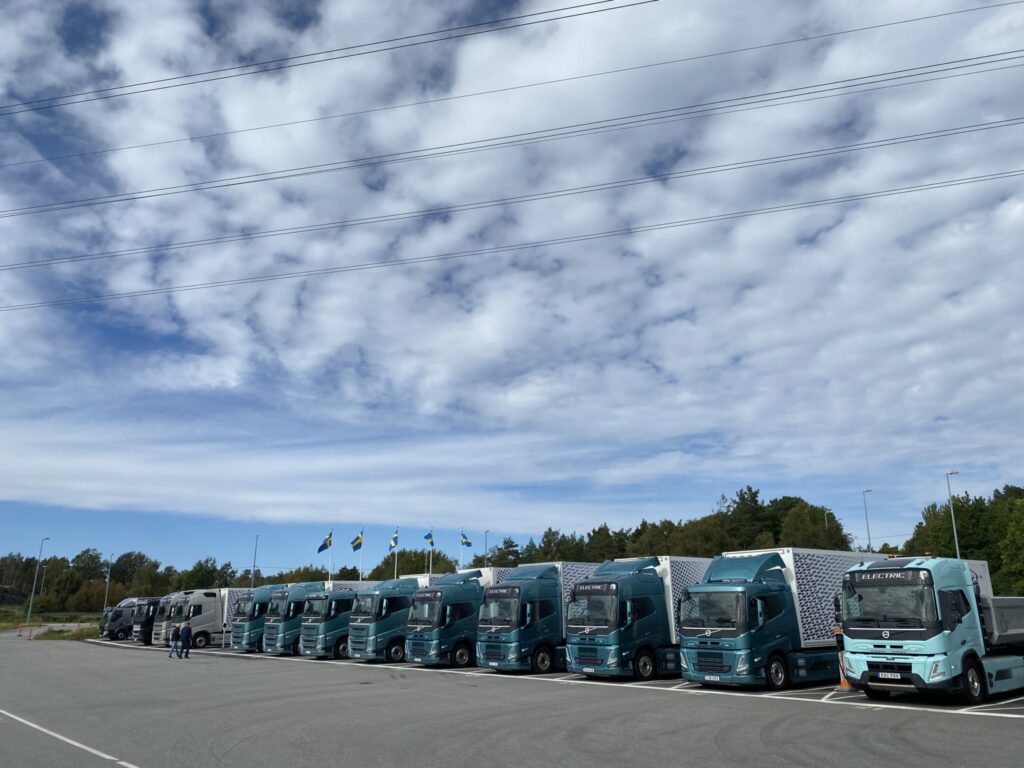On plugs, tanks, and bottlenecks
I’ve enjoyed some valuable truck seat time in recent weeks but generated few – and sometimes no – emissions.
There was the FH Electric tractor with a Globetrotter XL cab, drawing on six batteries storing 540-kWh of energy for a range of up to 300 km. Volvo’s prototype VT fuel-cell-electric vehicle, drawing on tanks of green hydrogen, generated clouds of vapor and drained water. Another unit ran on liquefied natural gas (LNG).
All were admittedly European configurations, although Linde Canada plans to showcase five of the LNG-powered Volvo FH models on our shores.

They weren’t the first zero- and low-emissions units I’ve had the opportunity to experience, and they won’t be the last. Established and emerging OEMs alike are eager to show what is coming or already hauling freight for specific customers.
But I’ve seen far more of the trucks than large-scale commercial fueling and charging stations. Therein lies the true bottleneck in zero-emissions transportation.
Emerging charging stations
Voltera CEO Matt Horton put it best when we crossed paths at the Move America 2023 show in Austin, Texas. “We can’t blame the OEMs anymore,” he said. While plenty of questions remain, not the least of which involve payloads and operating ranges, the vehicles themselves are rolling off assembly lines.
His company is developing 19 charging and infrastructure projects, including a hydrogen station for Nikola, and Horton knows there is a demand for many more. Much of the electric charging infrastructure that’s being developed has also been in the form of light-duty Level 2 chargers in locations that don’t support broader fleet rollouts. Nobody expects tractor-trailers to top up batteries in front of a local Starbucks.
There are some signs of progress. First Element, for example, is about to open a heavy truck hydrogen fueling station at the Port of Oakland, Calif.. Voltera is about to unveil its first “truck stop of the future” behind one fleet’s fence at the Port of Long Beach. In Canada, individual chargers are being installed wherever we add a battery-electric truck.
But we need more.
Charging and fueling lessons
The early chargers and hydrogen do more than “fuel” the first trucks. They offer case studies that allow fleets to rethink the ways they can be optimized. In other words, they identify exactly what type of equipment is needed, how routes can be optimized, and exactly how many chargers are needed.
PepsiCo, home to one of North America’s largest battery-electric fleets and some of the first Tesla Semis to hit the road, is actively exploring different business models to make it all work.
“Charging is not as simple as plugging in,” says electrification program manager Dejan Antunovic. There are cost implications like time-of-use rates and demand chargers to consider, and steps to match vehicle range and charging opportunities.
One of its first Tesla Semis showcased in a Run on Less demonstration is traveling 400 miles (640 km) per charge with a gross vehicle weight of 82,000 lb. (Battery weights are still a closely guarded secret, as are details about the payload.) Rapid charging comes via Tesla chargers that feature an eye-popping 750 kilowatts, supported by a Tesla Megapack Battery Energy Storage System.
Lessons learned
But it’s also found ways to work with limited charging infrastructure. When 14 Freightliner eCascadias were ready in Torrance, Calif., PepsiCo established temporary chargers until the permanent infrastructure could come online. And with limited space in Queens, N.Y., a Frito Lay facility was equipped with just six Level 2 chargers to support 31 Ford eTransits. Since most of those vehicles travel less than 50 km a day in the dense urban area and can run more than 160 km on a charge, the fleet is seeing if it can wait several days before recharging. In Modesto, Calif., it’s plugging into infrastructure that includes solar panels and battery storage.
FedEx Express manager of technology and integration Bill Cawein says it can take two years or more to prepare a facility for electric vehicles. Sites that require utility upgrades, or leased locations, add to the complexity.
“Your fleet electrification journey is going to be the most complex you’ve ever endeavored,” he said.
But the trucks are coming. We need to better prepare for them.
Have your say
This is a moderated forum. Comments will no longer be published unless they are accompanied by a first and last name and a verifiable email address. (Today's Trucking will not publish or share the email address.) Profane language and content deemed to be libelous, racist, or threatening in nature will not be published under any circumstances.